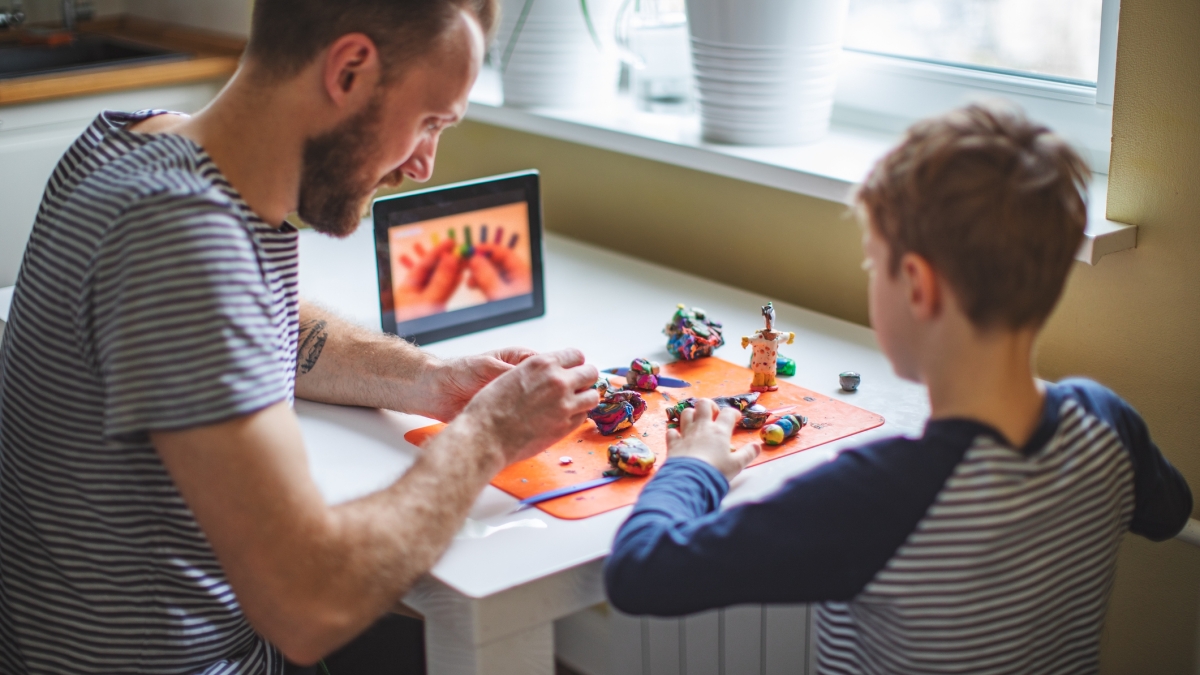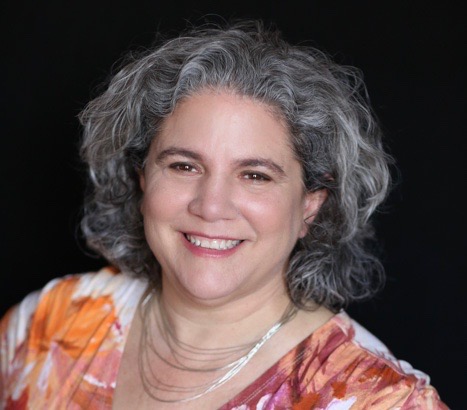COVID-19 forced all teaching in Arizona to go to an all-online format this past spring, including special education supports and services.
Special education district leaders and teachers quickly made the transition to finish out the semester, but they face serious complications — and unexpected opportunities — to build equitable and inclusive practices in the fall.
To get a better perspective on the issue, ASU Now spoke with Arizona State University’s Lauren Katzman, executive director of the Urban Collaborative, which is housed in ASU’s Mary Lou Fulton Teachers College.
The Urban Collaborative works with school districts across the country that are committed to leading inclusive and equitable education for students with disabilities. Katzman said the COVID-19 pandemic has presented challenges, opportunities and a period of examination regarding special education.
Lauren Katzman
Question: How easy was it for educators who teach students with disabilities to transition to online learning?
Answer: It was and it is still not easy to conduct school virtually without time to effectively plan and test different options. I am in awe of the educators doing this work. In just a few days, they moved from traditional in-person to a virtual education. I am inspired by the families who have taken on the education of their children, most while working from home. Families of students with disabilities get an extra round of applause! No matter how many have risen to the challenge, creating a new system while living through a pandemic has been very difficult.
Districts had to start by making sure students had access to technology and Wi-Fi. Many used busses to get technology to students, in effect, addressing some of the technology access gaps in our schools. Some of the Urban Collaborative districts configured the actual busses as Wi-Fi hotspots to assure students had internet access.
Districts had to make sure that teachers could use the technologies and families could support their children. Some of our districts ran webinars, and some simply got on the phone with families to walk them through the technology. Some teachers ended up talking about academic and emotional issues with families. As one district leader told me, families “are pulling out their hair trying to deal with mental health problems.”
There was and still is confusion on how to manage students’ Individualized Education Programs (IEPs), a legal document that provides a plan to ensure students with disabilities’ access to the curriculum. This is done by minimizing the barriers brought on by disabilities and maximizing opportunities for students to succeed as do their peers without disabilities. IEPs have been developed to be implemented in schools, with many scheduled to the minute and aligned to the actual educator who will provide the service. This is difficult to replicate in a virtual environment.
This barrier forced some positive practices. We heard from districts that their inclusive practices were increasing, as special and general educators had to plan together to create virtual learning environments. Collaborative planning allowed the special education supports to be built into lessons, providing the student with a disability with what they need in a class with their peers. Districts also embraced teletherapies and conducted virtual IEP meetings with families. To this end, one district told us that they hope to continue virtual IEP meetings, as it allowed families to participate without the need for childcare or travel.
Q: What are some things you can’t transfer?
A: Providing an education to students with complex disabilities can be extremely difficult, especially for those with intellectual disabilities. I would not say that this is impossible, but definitely difficult. There are schools doing a phenomenal job of including each and every student, however, many of these schools were on this path before the pandemic hit. It is difficult to plan for students who might communicate with technology to use a second piece of technology for academic instruction. There are some students who simply may not connect well to technology at all. There are examples, such as students without cognitive disabilities reading to those with this disability, students participating in virtual morning meetings to keep social connections, and for older students with intellectual disabilities, some have been able to work on developing skills they might need to have a job. For many of them, there is a need for more time and support from family members.
The other aspect of special education that has been difficult to conduct are evaluations, particularly initial evaluations. The process of assessing how a student learns and what might help them to be able to succeed in school is difficult to do virtually. Assessments require communication and the use of tools, such as academic achievement assessments that are not yet found to be reliable as an online assessment.
Q: How would you advise educators and school districts to address questions surrounding compliance?
A: Compliance is a part of the makeup of special education and it is meant to protect students. Compliance is focused on the provision of a free and appropriate public education (FAPE) and includes timeliness, assurance that students are receiving their services and receiving them in the least restrictive environment. The issue that the disability rights community is focused on is protecting the civil rights of students with disabilities. The issue that districts are focused on includes these civil rights concerns, and they are also focused on compliance timeliness and assurances that students are receiving their individualized services. The Department of Education has provided unclear guidance regarding compliance with special education regulations when school is being held virtually. That said, if districts can document that they have tried to provide special education services and they have reached out to families, I believe that puts them in a stronger position and, if they can follow state guidelines, districts will be in an even stronger legal standing. It is my belief that figuring out how to develop services in the midst of a pandemic should not be considered a violation of those protections.
Q: What are some of the opportunities that have arisen out of the pandemic that might be worth using in the future?
A: While closing in-person schools because of a pandemic is horrific, districts have developed many opportunities that I hope they continue to embrace. The most important one is a focus on inclusion and equity. Districts have used the shift to a virtual education to create more inclusive practices and to reevaluate the practice of educating students with disabilities in a separate environment or pulling students with disabilities out of their general education class to provide special education services. Circumstances have required teachers to plan collaboratively and students to be taught together. We know from the research that this works, and we are hearing success stories from districts with vows to never go back.
Urban Collaborative members have told me that they have had to become more creative in how they engage students and families, that the increased district communication with state directors has connected educators and allowed them to share practices. We facilitated seven Zoom meetings with as many as 150 people where district leaders and field experts shared their practices with each other.
The pandemic has also heightened awareness and opened more conversations on the intersection of race and disability. I want to see these talks continue and grow. Families of African American and Latinx students with disabilities are concerned about their children’s relationship with law enforcement, and those in law enforcement who are in schools, are concerned that they are not trained as educators. For example, addressing the needs of a student with autism who needs de-escalation is an educational issue, rather than a criminal one. Let’s take this time to examine this practice and focus on what is right for students.
Q: Speaking of the future, how do you see this issue moving forward?
A: Most states have been focused on preparing for three models; all-virtual, blended virtual and in-person within social distancing guidelines, and fully in-person within social distancing guidelines. Districts are confused, but are now in the process of preparing. As one district leader said, “The plan is that we will let you know what the plan is.” I am on one district’s school reopening committee and the complexities are quite overwhelming. How do we keep students safe? How do we keep educators safe? How do we provide a high-quality, equitable education for all? How do we provide special education supports and services so that students with disabilities are able to succeed in school during these trying times? What I hope districts do is to keep in mind the health and well-being of students and staff with equity as a focal point when planning for the upcoming school year. Education has changed and my hope is that while we are in the midst of this pandemic, we deal with the barriers, but more importantly, we find and embrace inclusive and equitable opportunities for all students.
Top photo courtesy of iStock/Getty Images.
More Arts, humanities and education

ASU instructor’s debut novel becomes a bestseller on Amazon
Desiree Prieto Groft’s newly released novel "Girl, Unemployed" focuses on women and work — a subject close to Groft’s heart.“I have always been obsessed with women and jobs,” said Groft, a writing…

‘It all started at ASU’: Football player, theater alum makes the big screen
For filmmaker Ben Fritz, everything is about connection, relationships and overcoming expectations. “It’s about seeing people beyond how they see themselves,” he said. “When you create a space…

Lost languages mean lost cultures
By Alyssa Arns and Kristen LaRue-SandlerWhat if your language disappeared?Over the span of human existence, civilizations have come and gone. For many, the absence of written records means we know…



